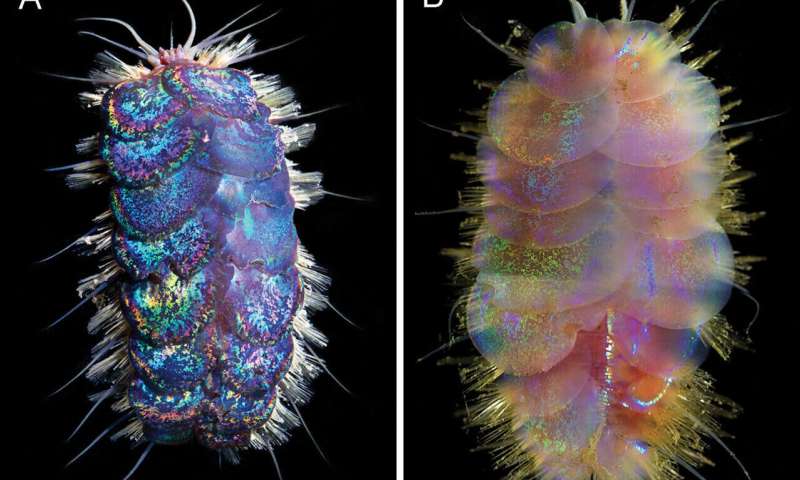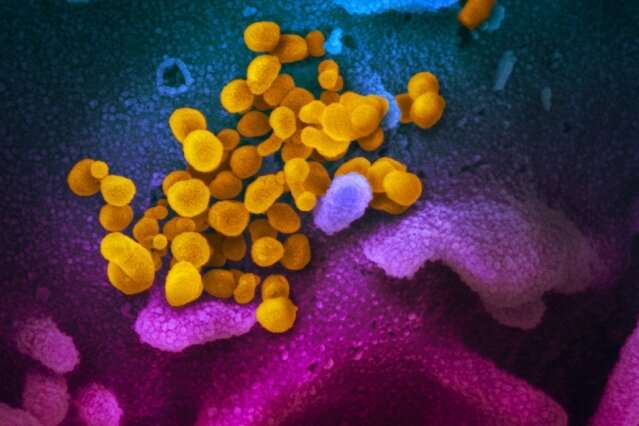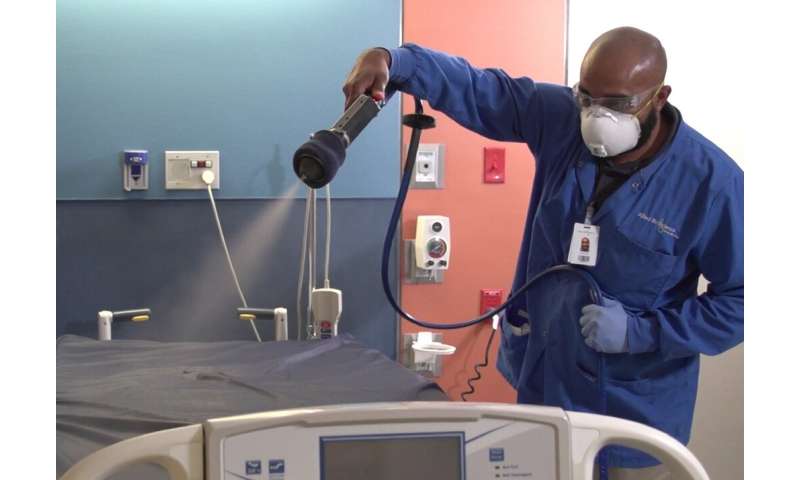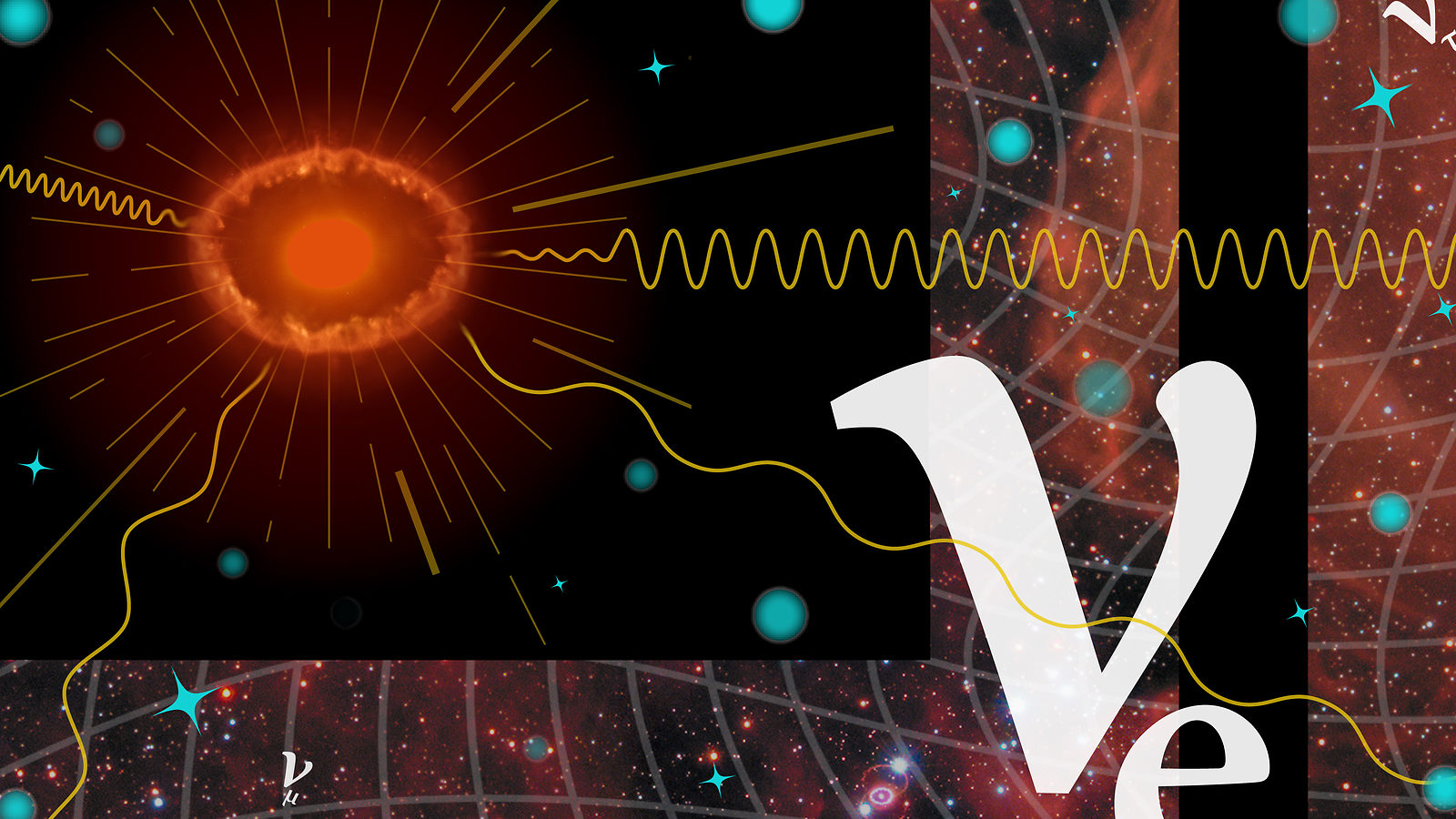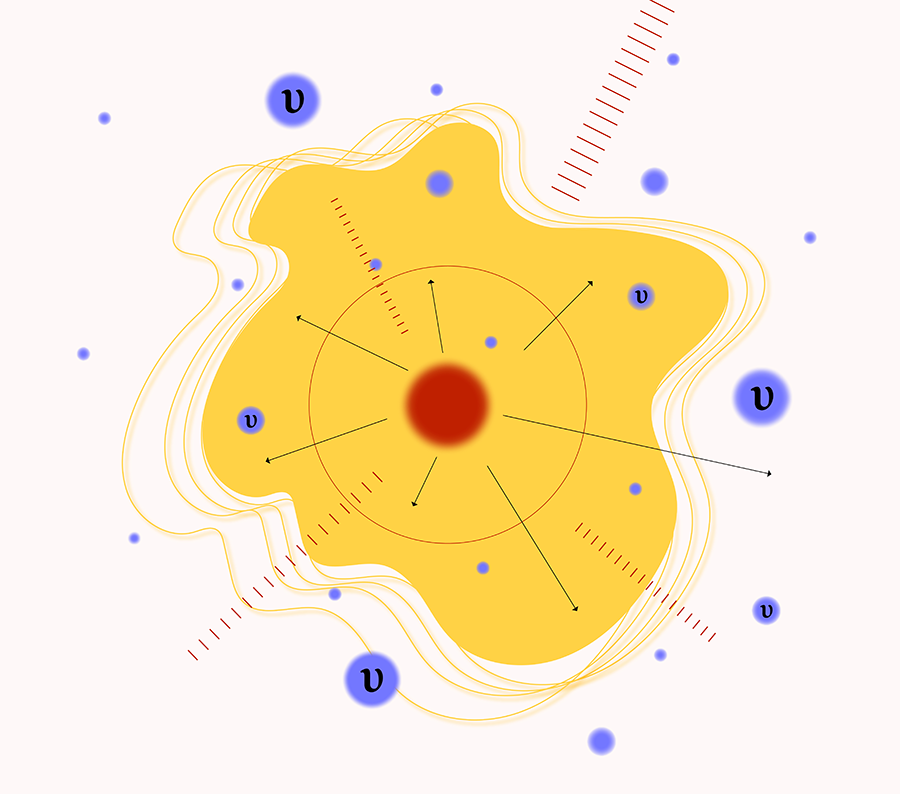MADDIE SOFIA, HOST:
Hey, Maddie Sofia here with a quick note ahead of today's show. We know that there are a lot of things people need right now, and information is one of them. Today is Giving Tuesday Now, which makes it a great day to support public radio's mission to keep you informed. And when you donate to a local NPR station, you're making all the news and information that you rely on from this podcast available to everyone free of charge. To help us do that, visit donate.npr.org/short. Thanks.
(SOUNDBITE OF MUSIC)
SOFIA: You're listening to SHORT WAVE...
(SOUNDBITE OF MUSIC)
SOFIA: ...From NPR.
Going out into nature - hiking, paddling, looking up at the stars - has always helped me center myself. It reminds me that I'm just Madeline Kelly (ph) Sofia, one human among millions of critters and trees and galaxies that don't care about me or acknowledge me at all. I'm just a group of random atoms - matter taking up space. And it turns out that matter as we normally think of it is a tiny, tiny portion of the universe, meaning your genes, the ocean, trees, computers, all the stars and planets - all of that is only 5% of the universe.
SARAFINA NANCE: And the rest of the stuff is dark matter and dark energy.
SOFIA: Right, which is wild. That's so much. (Laughter) That's so much of it. That's too much of it. Honestly, it's too much.
NANCE: (Laughter) Yeah. It's like a very uncomfortable place to be in when you think about - oh, you know, we study the universe, and theoretically we understand, you know, on some scale, how the universe works. And then all of a sudden, you're like - oh, wait; we actually do not understand, like, over 95% of our universe. What?
SOFIA: The large majority of our universe is made up of this mysterious thing called - I kid you not - dark energy.
(SOUNDBITE OF MUSIC)
SOFIA: And get this - it's how we know that our universe is expanding. I learned about dark energy, honestly, like, three weeks ago. And it blew my mind.
NANCE: Dark energy is intrinsic to the fabric of space-time that is somehow pushing galaxies apart.
SOFIA: This is Sarafina Nance's day job.
NANCE: I am a Ph.D. student at UC Berkeley studying supernova and cosmology.
SOFIA: Supernova, meaning an exploding star that can help us understand how our universe is changing. You know, no big deal.
NANCE: It's a really phenomenal thing in sort of the scale of the universe to see something change. And that's this class of astronomy called transience, where things change in the night sky and you can learn about them through their changes.
(SOUNDBITE OF MUSIC)
SOFIA: So today we explore one of the universe's biggest mysteries - dark energy - from the days of Einstein to the exploding stars that help us understand the very fabric of our universe.
(SOUNDBITE OF MUSIC)
SOFIA: So. OK, Sarafina, to really understand dark energy, we have to go back to Einstein. Right?
NANCE: Yeah. So Einstein came up with this theory of general relativity, which is basically his version of gravity, in the early 1900s. And the only way to make his equations work and satisfy what he thought was a static universe, he introduced this fudge factor - in his words - called the cosmological constant.
SOFIA: So Einstein actually thought that the universe was static, not that it was expanding.
NANCE: That's right. And over the next 10 years, people sort of manipulated these equations and tried to find solutions and started hinting at perhaps the universe wasn't static.
(SOUNDBITE OF MUSIC)
SOFIA: Well, it's nice to see that, you know, Einstein can get things wrong. That's cool.
NANCE: (Laughter) So the funny thing is this cosmological constant, he called it his biggest blunder.
SOFIA: Honestly, it's just nice to hear Einstein say I messed up, you know what I mean?
NANCE: I know. Well, the fun fact...
SOFIA: We can all mess up.
NANCE: The fun fact is that he ended up actually being right.
SOFIA: Right (laughter). Dang it.
NANCE: So it turns out that that cosmological constant is exactly what we think dark energy is...
SOFIA: (Laughter).
NANCE: ...And is necessary to actually describe our universe.
SOFIA: I feel like that's classic Einstein. Him being wrong...
NANCE: Yep.
SOFIA: ...Is being more right than I've ever been in my entire life.
NANCE: Exactly. Yes (laughter).
SOFIA: OK. So after Einstein introduces this idea that the universe is static, we figure out, actually, that the universe is expanding. Right?
NANCE: Yeah. So in 1929, Edwin Hubble showed that the universe is not static; it's actually expanding. So what he did is he measured, basically, galaxies and how far away they are. And he found that galaxies are actually moving away from us. So that means that the universe is not static. It's, in fact, expanding.
SOFIA: And at this point, we think that the universe is expanding but that that expansion is slowing down. Is that correct?
NANCE: Exactly. So we think that the expansion comes from the Big Bang and it comes from inflation, which was right after the Big Bang, which is this rapid expansion of space. But because there's gravity in the universe and there's mass in the universe, we would think that gravity starts to take over and the expansion decelerates because gravity starts to pull things back in.
SOFIA: And then in the late '90s, we get turned on our head again, right? There's another big discovery. And we're like - oh, wait, wait wait...
NANCE: (Laughter).
SOFIA: ...Maybe she's not slowing down.
NANCE: That's right. So in 1998 and in 1999, there were two teams that were studying a specific type of supernova. And they found that these supernova that were super far away from us were fainter than what we would have expected if the universe was in fact expanding but decelerating that expansion. And the only way to explain away that faintness is if the universe was instead accelerating its expansion.
SOFIA: Wild. So we went from, the universe is static - OK, it's not static; it's expanding, but it's slowing down that expansion to - wait, wait, wait - not only is it expanding but it's expanding faster than we thought it was and it's speeding up. And what...
NANCE: That's right.
SOFIA: And the explanation for that is dark energy?
NANCE: You killed it. That's right.
SOFIA: I nailed it. OK. So yes, we have finally gotten to the point where I can ask you - Sarafina, what is dark energy? (Laughter).
NANCE: So I think the only answer to that question is we don't know.
SOFIA: Oh, come on, Sarafina. You brought me all the way here. You told me Einstein's story, and we don't know.
NANCE: I know. It's really uncomfortable to sit with.
(LAUGHTER)
NANCE: We can see dark energy through its effects on the expansion of the universe, but we don't actually know what it is.
SOFIA: Wow. I don't even know - I don't even know what to say about that. That's - so - 'cause it's wild. We don't know what dark energy is, but we know it exists.
NANCE: Yes.
SOFIA: And - so what are you doing over there, astronomers?
NANCE: (Laughter).
SOFIA: This is what we've got - 4% to 5%? No, I'm just teasing you. So that - I mean, that's wild. And the amount of dark energy is staying the same, right?
NANCE: So that's an interesting question. So I like to kind of describe dark energy and the expansion of the universe in - the way that I think about it is sort of picture a loaf of bread and picture a bunch of raisins in the bread. And the raisins are like our universe's galaxies. And the bread itself is like space-time.
SOFIA: OK.
NANCE: And so as you bake the bread, the bread rises and the raisins get farther and farther apart. They're sort of carried along the fabric of space-time, which means that the distance between galaxies increases with time.
SOFIA: OK. I'm with you. I'm with you.
NANCE: And the introduction of dark energy is like - imagine you have this special type of yeast that you can put into a bread and the bread starts to rise with yeast. And then all of a sudden, it starts to rise a lot, and it gets bigger and bigger and bigger over time. And that's dark energy.
SOFIA: So dark energy is the weird yeast that causes...
NANCE: Exactly.
SOFIA: ...Our universe to grow and push our galaxies farther and farther apart from each other.
NANCE: Exactly. And it causes it to grow exponentially.
SOFIA: Well, I totally get it now.
NANCE: (Laughter) Great. We'll...
SOFIA: Now that we put...
NANCE: We'll publish a paper.
SOFIA: Now that we started talking about carbs, I'm starting to understand.
NANCE: (Laughter).
SOFIA: OK. OK. So we actually figured a lot of this out by studying a particular type of exploding star - a supernova.
NANCE: Right.
SOFIA: Tell me about that.
NANCE: So when dark energy was first basically discovered, it was discovered through a specific type of supernova that forms when you have a binary system of a really big star or a really small star and another small star, which is called a white dwarf. And basically, the white dwarf accretes matter from the companion star - the binary star - and ignites an explosion. And the really interesting thing about this particular type of supernova is that all of them blow up with the same brightness.
(SOUNDBITE OF MUSIC)
NANCE: And that makes them what we call standard candles. So if you can imagine a lightbulb and you have a lightbulb right next to you and you have a lightbulb a hundred feet away from you, the one that's right next to you seems to be way brighter. And the one that's farther away from you is way fainter. And so by using the intrinsic brightness of the sort of lightbulb or, in the universe, of the supernova and comparing it to what is observed, we can determine the distance to the supernova and determine how fast that galaxy that hosts the supernova is expanding away from us.
(SOUNDBITE OF MUSIC)
SOFIA: Wild. That's wild. That's your job.
NANCE: Yes, it's really cool.
SOFIA: I mean, it's very cool. That is very cool. OK. So basically studying these supernovae help us understand how fast the universe is expanding because we can kind of try to calculate how far those explode-y stars are away from us. Is that fair?
NANCE: Yeah, that's exactly right.
SOFIA: OK. And tell me if I'm overselling this, but all of this potentially gives us clues into how the universe could end.
NANCE: That's exactly right.
SOFIA: So what is our best guess as far as, like, how the universe could end?
NANCE: So right now, we think that dark energy stays constant with time, which means that the universe is going to continue to accelerate its expansion. Distances between galaxies are going to get further and further apart with time. And so it's going to accelerate forever, and it's going to be a cold, dark universe.
SOFIA: I mean, that sounds about right to me, you know?
NANCE: (Laughter) You know, it's kind of where we're at right now.
(LAUGHTER)
SOFIA: So what's the coolest thing about all of this to you, Sarafina? Because this is objectively very cool.
NANCE: Well, thanks. I love it. I think it kind of goes back to what drew me to astronomy in the first place, which is we are trying to understand some of the most fundamental aspects of our universe and human existence. And we can derive some sort of meaning about, you know - how did we get here? what is the fate of the universe? how does that change with time? - and learn some really profound things about what it means to exist here.
(SOUNDBITE OF MUSIC)
SOFIA: Sarafina Nance studies supernova and cosmology at UC Berkeley.
This episode was produced by Rebecca Ramirez, edited by Geoff Brumfiel and was fact-checked by Emily Vaughn I'm Maddie Sofia, and we are all in awe of our universe. Thanks for listening to SHORT WAVE from NPR. See you tomorrow.
(SOUNDBITE OF MUSIC)
